Drops are the most original rule in shogi. It might be little confusing, but when you get used to it, it will bring a lot of fun to the gameplay.
The pieces you have taken were put on right side of each player on the piece stands. Those pieces now belong to the player who took them and are called “pieces in hand”.
In each turn, a player he has a choice: he can move a piece on board or instead, he can add a piece from piece stand to the board. The action of piece returning from the hand to the board is called “dropping”. You can drop the piece only onto free squares on the board.
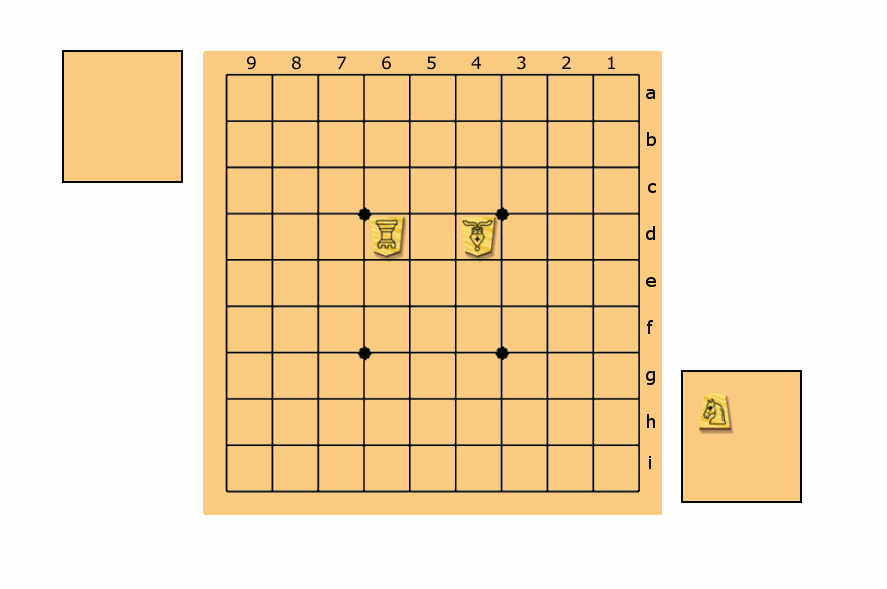
There are some other limitations that are explained in lesson 8. But first let’s see some interesting examples.
Drop problem 1 – a painful drop
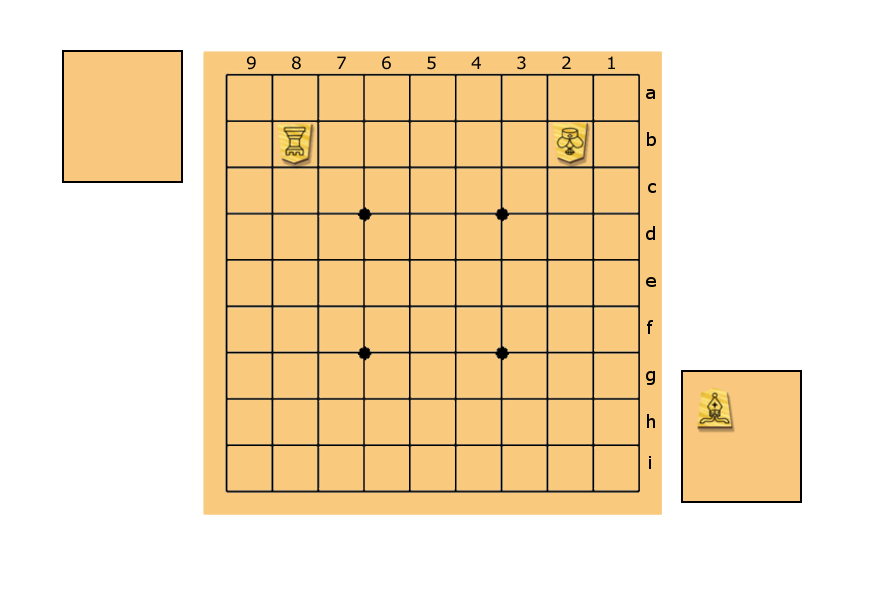
Answer: Bishop drop to 5e creates a powerful fork on the rook and the king. You will get the rook for free after the king escape.
Drop problem 2 – smells like a checkmate?
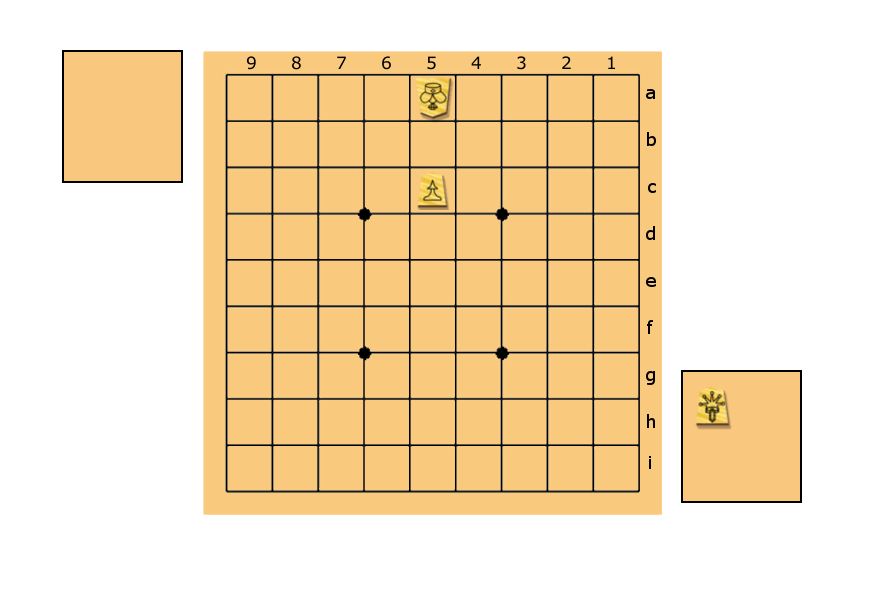
Answer: The technique called „gold at the head”. Gold drop to 5b. The simplest mating shape. Very useful in real games.
Drop problem 3 – very effective protection against a check
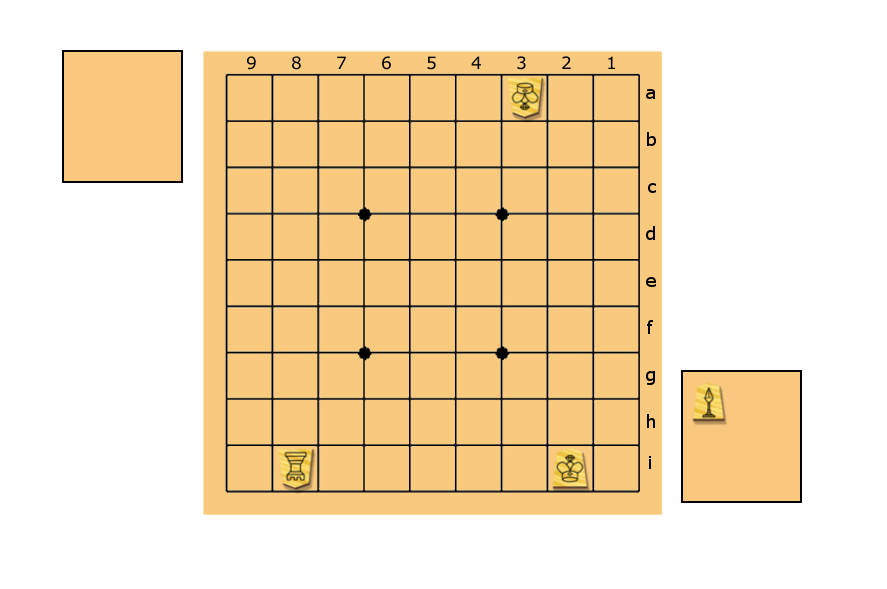
Answer: Dropping means that pieces appear suddenly on the board! We were in check, but after the lance drop to 3i the opposite king stands in a check! Effective defense.
Drop problem 4 – fork or pin?
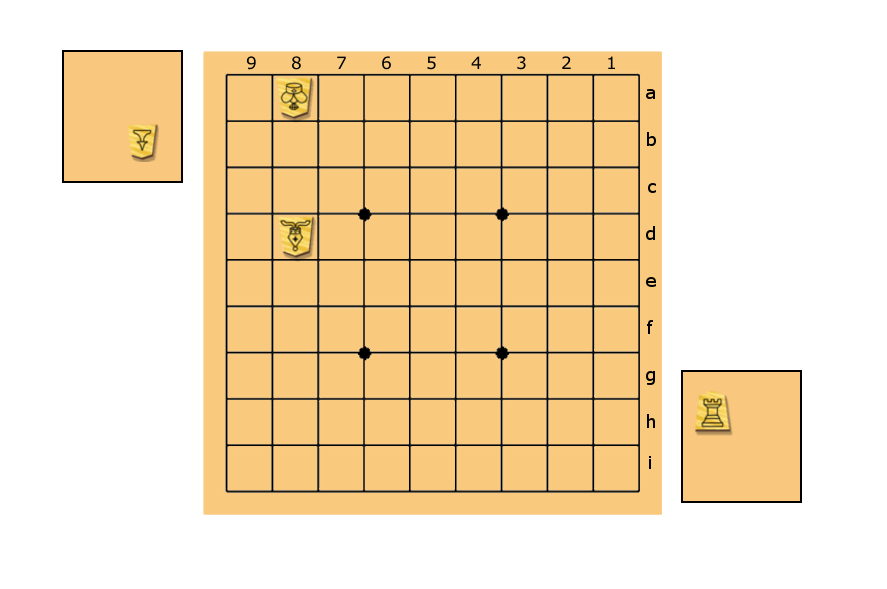
Answer: The pin does not work! After dropping the rook under bishop to eg. 8e square, the opponent protects with the pawn drop to 8c! The correct answer to drop the rook on 8c square and after pawn drop to 8b, taking the bishop.
So now you know that in shogi you do not only take opponent’s piece off the board – the piece actually joins your team!
Now, where is the dragon?
